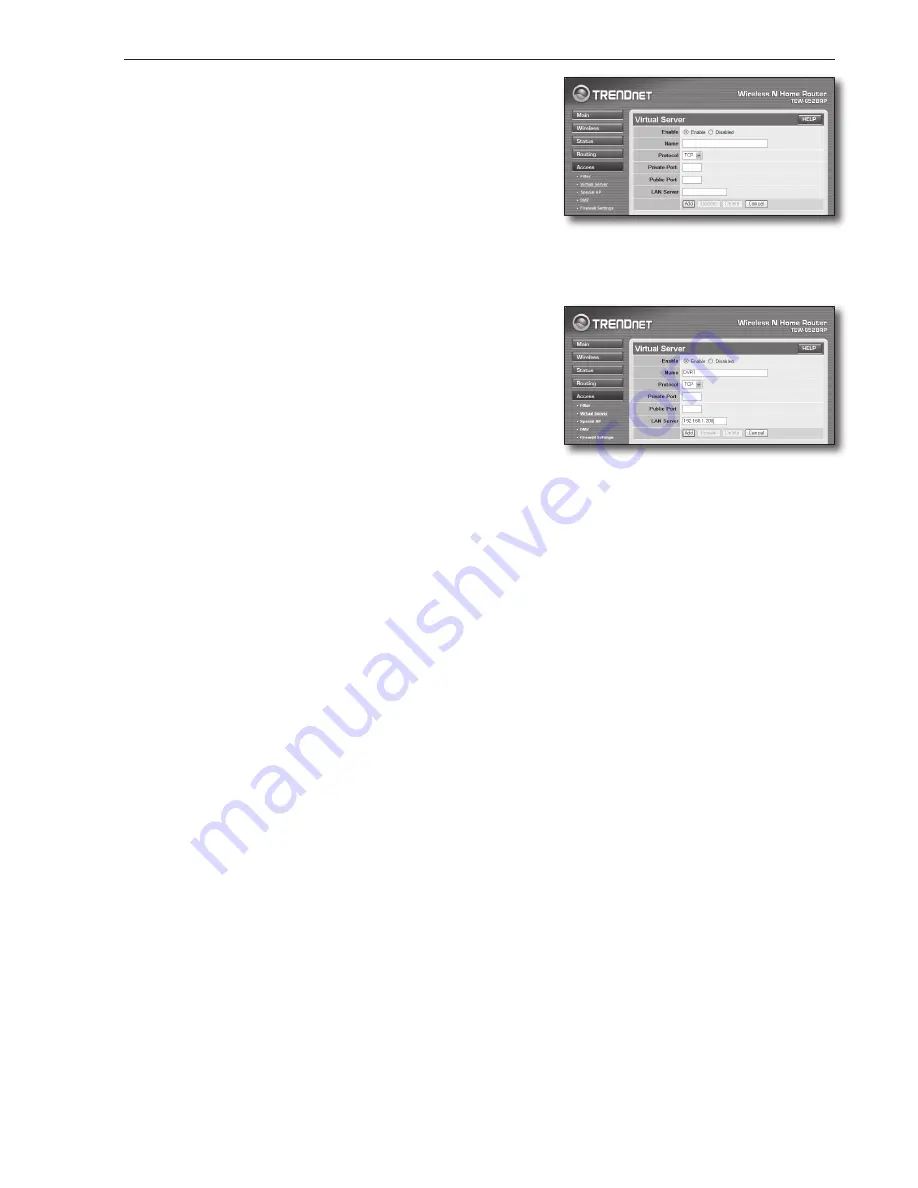
English-17
Step 5.1-Case 5. TRENDNET TEW-652BRP
1.
Click on <Access> and then <Virtual Servers> from the menu on the left side.
2.
Set port forwarding for <HTTP Port>.
2
-1
. Select [Enable] for item <Enable>.
2
-2
. In <Name> field, enter a name for DVR port.
For example, "DVR 1"
2
-3
. Select [TCP] for item <Protocol>.
2
-4
. In <Private Port> and <Public Port> fields, enter <HTTP Port> defined in
Step 3.
For example, 80
2
-5
. In <IP Address>, enter the IP address defined for DVR in Step 3.
For example, 192.168.1.200
2
-6
. Click on [ADD].
3.
Set port forwarding for <Client Port>.
3
-1
. Select [Enable] for item <Enable>.
3
-2
. In <Name> field, enter a name for DVR port.
For example, "DVR 2"
3
-3
. Select [TCP] for item <Protocol>.
3
-4
. In <Private Port> and <Public Port> fields, enter the <Client Port> defined
in Step 3.
For example, 4520, 4521, 4522, 4523, 4524.
3
-5
. In <LAN Server>, enter the IP address defined for DVR in Step 3.
For example, 192.168.1.200
3
-6
. Click on [ADD] button.
4.
Finish setting.
Step 5.2 Check Port Forwarding on Computer
1.
Re-verify the <WAN (Internet) IP> selected in Step 4.2.
2.
Re-verify the <HTTP Port> selected for DVR in Step 3.1.
3.
Run Internet Explorer and enter "http://<WAN (Internet) IP>:<HTTP Port> into the address bar and then press [ENTER].
4.
If the port forwarding configuration has been set up correctly, the Web Viewer screen for the DVR will be displayed.
5.
If you fail to access Web Viewer or, you can access it but the video fails to be displayed, return to Step 5.1 and check it again.
J
`
If port forwarding is configured only for <HTTP Port>: the Web Viewer can be accessed through Web browser, but the video cannot be received,
because Port Forwarding is not configured for <Client Port> which is used for video data communication.
If port forwarding is configured only for <Client Port>: the Web Viewer cannot be accessed through Web browser, because port forwarding is
not configured for <HTTP Port> which is used for communication.
4520
4520
80
80


































